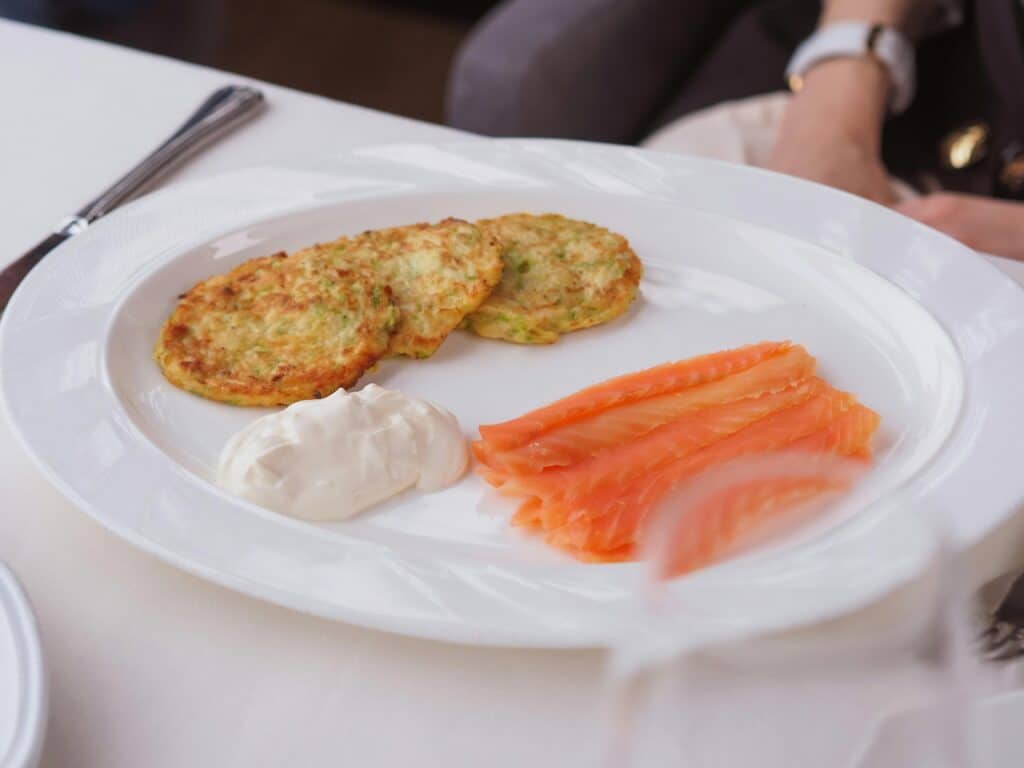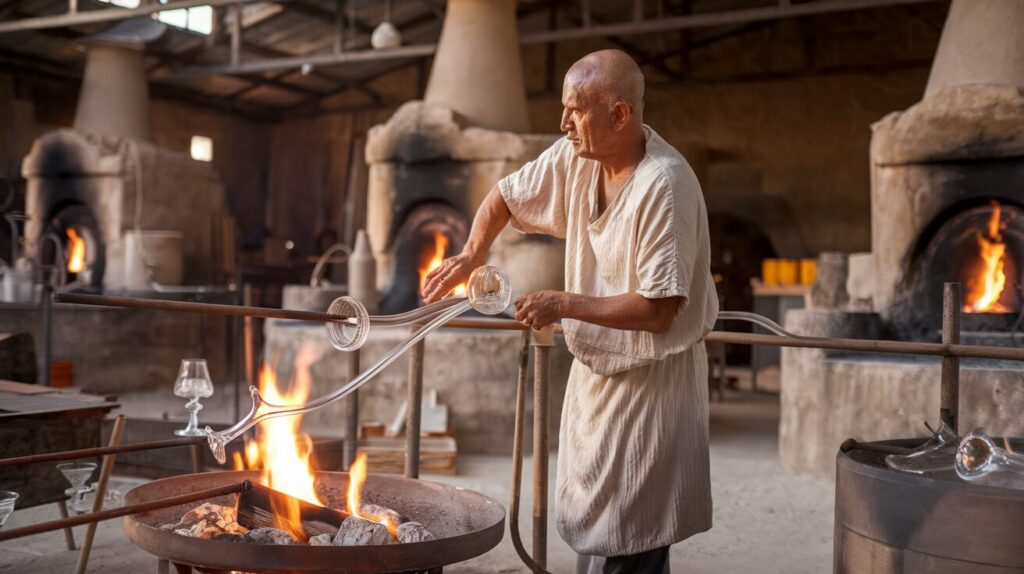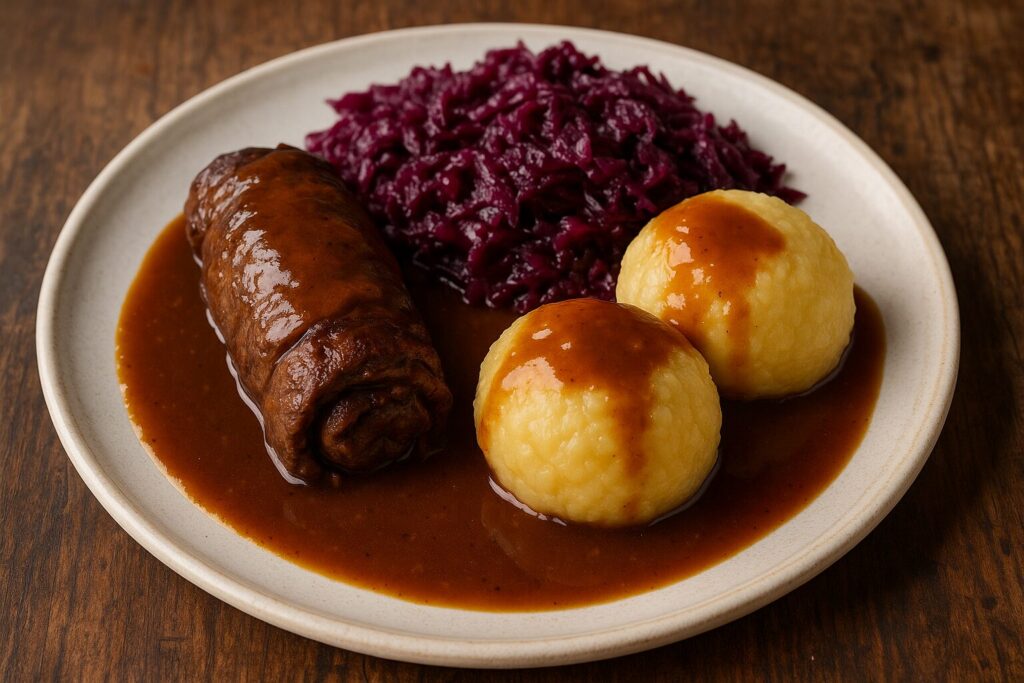Okay, so picture this: It’s a chilly autumn evening, the kind where the leaves are swirling outside and all you crave is something warm and comforting. For me, that something was always tied to memories of my mother’s kitchen, filled with the smell of sizzling potatoes and a whole lot of love. Today, I’m sharing a little piece of that nostalgia with you: her recipe for German potato pancakes! Forget fancy ingredients and complicated techniques. This is honest-to-goodness, old-fashioned German cooking at its finest. We’re talking crispy edges, soft, savory insides, and a taste that will transport you straight to a cozy German kitchen. Get ready to grate some potatoes and create a little magic!
German Potato Pancakes (Kartoffelpuffer)
Yields: Approximately 10-12 pancakes Prep time: 10 minutes Cook time: 15-20 minutes
Ingredients:
- 2 medium-large potatoes (about 1 pound), peeled
- 1/2 medium onion, peeled
- 1 large egg
- 1/4 cup all-purpose flour (plus extra for dusting if needed)
- 1/2 teaspoon salt
- Vegetable oil or canola oil, for frying (about 1/4 inch deep in the pan)
- Optional toppings: Applesauce, sour cream, and/or sugar
Equipment:
- Box grater or food processor with grating attachment
- Large mixing bowl
- Large skillet or frying pan
- Spatula
- Paper towels



Instructions:
1. Prepare the Potato Mixture:
- Using a box grater (coarse side) or a food processor with a grating attachment, grate the peeled potatoes and onion.
- Place the grated potatoes and onion in a clean kitchen towel or cheesecloth. Squeeze out as much excess liquid as possible. This step is important for crispy pancakes. Tip: Don’t skip this step! Excess moisture will make the pancakes soggy.
- Transfer the squeezed potato and onion mixture to a large mixing bowl.
2. Combine Ingredients:
- Add the egg, flour, and salt to the bowl with the potato mixture.
- Mix well until everything is thoroughly combined. The batter should be thick but still somewhat loose. Tip: If the batter seems too wet, add a tablespoon of flour at a time until you reach the desired consistency.
3. Heat the Oil:
- Place a large skillet or frying pan over medium heat.
- Add about 1/4 inch of oil or butter to the pan. (We aways use butter)
- Heat the oil until it shimmers and a small piece of potato sizzles gently when dropped into it. Tip: The oil needs to be hot enough to crisp the pancakes but not so hot that they burn.
4. Fry the Pancakes:
- Carefully drop spoonfuls of the potato mixture into the hot oil, forming small pancakes (about 3-5 inches in diameter). Don’t overcrowd the pan; work in batches.
- Flatten the pancakes slightly with the back of a spoon.
- Fry for 3-4 minutes per side, or until golden brown and crispy.
- Tip: If the pancakes are browning too quickly, reduce the heat slightly.
5. Drain and Serve:
- Remove the cooked pancakes from the pan and place them on a plate lined with paper towels to drain excess oil.
- Serve immediately while hot and crispy.
6. Add Toppings:
- Serve with your choice of toppings. Traditional German toppings include applesauce, sour cream, and/or a sprinkle of sugar. Growing up, my mother always made them with applesauce and a sprinkle of sugar.
Cooking Tips and Variations:
- Potato Type: Russet potatoes work well for this recipe because of their high starch content. Yukon Gold potatoes are also a good choice.
- Crispiness: Squeezing out the excess moisture from the potatoes is the key to achieving crispy pancakes.
- Flavor Boost: For added flavor, consider adding a pinch of nutmeg or black pepper to the potato mixture.
- Onion Variation: If you prefer a milder onion flavor, you can grate the onion and then sauté it in a little butter before adding it to the potato mixture.
- Keeping Warm: If you’re making a large batch, you can keep the cooked pancakes warm in a preheated oven (200°F or 95°C) until ready to serve.
- Gluten-Free Option: Substitute the all-purpose flour with a gluten-free all-purpose flour blend.
- Sweet vs. Savory: While often served with sweet toppings like applesauce and a bit of sugar, these pancakes are also delicious with savory toppings like smoked salmon or a fried egg.
Enjoy your delicious and quick German Potato Pancakes! Guten Appetit!



FAQ
What’s the difference between German potato pancakes (Kartoffelpuffer) and other potato pancakes?
While potato pancakes are enjoyed in many cultures, German Kartoffelpuffer often have a slightly coarser texture and a more savory flavor profile. This is because the potatoes are typically grated rather than mashed, and the recipe often includes onion and sometimes a touch of nutmeg or marjoram for that distinctive German taste. Also, we traditionally serve them with applesauce or sour cream with a sprinkle of sugar, offering a delightful sweet and savory combination.
Can I use any type of potato for this recipe?
Yes, you can use different types of potatoes, but we highly recommend using starchy potatoes like Russet or Yukon Gold. Because these potatoes have a higher starch content, it helps to bind the pancakes together and gives them that nice crispy outside. Waxy potatoes, like red potatoes, tend to be too moist and can result in a less crispy pancake.
My potato pancakes always fall apart when I try to flip them. What am I doing wrong?
Here are a few things to check: First, make sure you’ve squeezed out as much excess moisture from the grated potatoes as possible. Second, make sure your pan is hot enough before adding the pancake batter. A medium-high heat is usually perfect. And finally, don’t overcrowd the pan – cook the pancakes in batches to maintain the oil temperature. A good, thin metal spatula is also your best friend for a clean flip!
Can I prepare the potato mixture ahead of time?
Raw potatoes tend to oxidize and turn brown when exposed to air. If you’re preparing the mixture ahead of time, squeeze out the excess moisture and then mix it with a tablespoon of lemon juice or vinegar. This will help prevent browning. Store it in the refrigerator in an airtight container, but be aware that it might still release some liquid, which you’ll need to drain off before cooking. For the best results, I would recommend making the batter right before you’re ready to cook.
What are some traditional German toppings for Kartoffelpuffer besides applesauce?
While applesauce is traditional, there are many other delicious toppings you can try. Sour cream (Schmand or Sauerrahm) is another popular choice. Some people also enjoy them with a sprinkle of sugar or cinnamon sugar for a sweeter treat. In some regions, they’re even served with savory toppings like smoked salmon or a dollop of herb quark (a type of fresh cheese). Feel free to experiment and find your favorite combination!
What is the difference between German potato pancakes and latkes?
German potato pancakes, known as Kartoffelpuffer or Reibekuchen, are typically made with grated raw potatoes, flour, and eggs, and are often seasoned with salt and pepper. They may include additional ingredients like onions and are usually served with applesauce or sour cream. Latkes, on the other hand, are a traditional Jewish dish made from grated or shredded potatoes, mixed with eggs and flour, and are commonly flavored with onions. Latkes are traditionally served during Hanukkah and often paired with applesauce and sour cream as well. The main difference is in the seasoning, preparation methods, and cultural contexts.
What is the difference between Kartoffelpuffer and reibekuchen?
Kartoffelpuffer and reibekuchen refer to similar potato pancakes, but Kartoffelpuffer is a term commonly used in Eastern Germany, while reibekuchen is used in the Western regions. The preparation and ingredients are typically the same, primarily consisting of grated potatoes, onions, salt, and sometimes egg, fried until crispy.
*You may also like: German Red Cabbage Recipe or German Beef Rouladen Recipe




